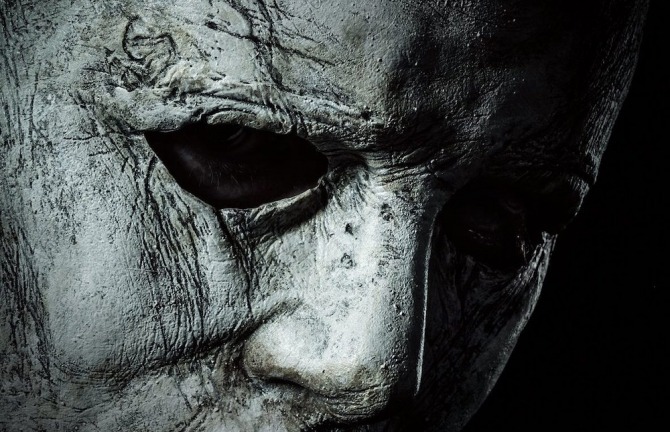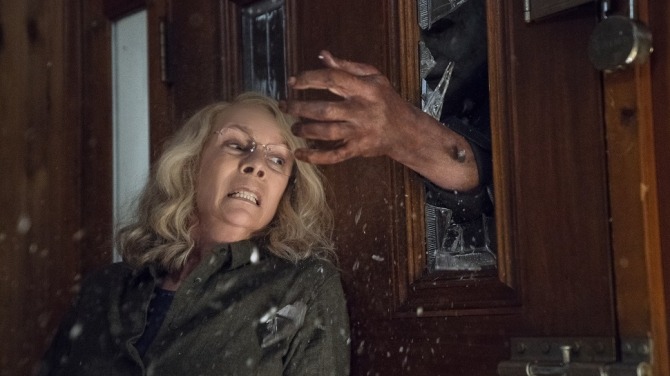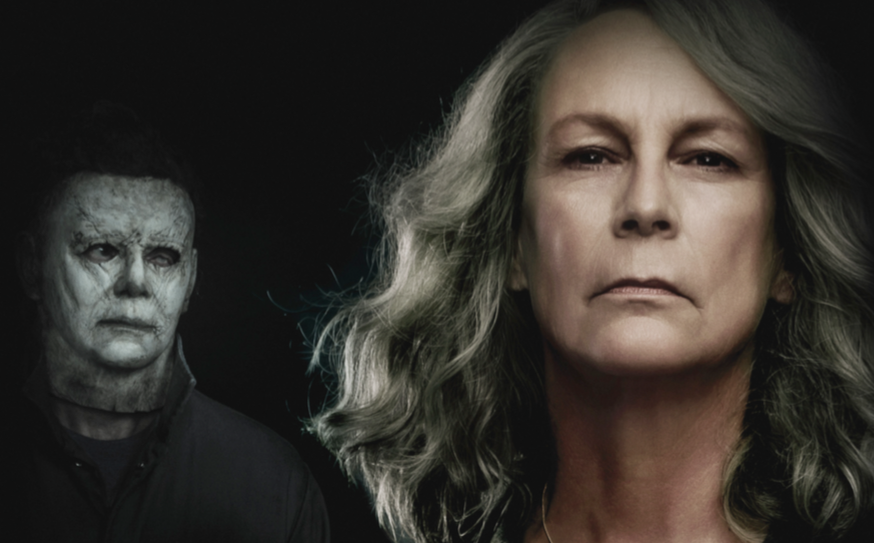Although Halloween wasn’t the first ever slasher (that could be Peeping Tom or Psycho, the films of Italian Giallo or Black Christmas, depending on who you ask), it is often cited as the film that redefined and then went on to define the whole genre, ushering in the Golden Age of the slasher movie. As 2018’s Halloween approaches, we take a look back at the original, the rules it set, and how it has managed to endure over 40 years – and still scare audiences today.
The Final Girl
When, in 1996’s Scream, movie nerd Randy (Jamie Kennedy) explained the rules of the horror movie, he used Halloween as a prime example. “There are certain RULES that one must abide by in order to successfully survive a horror movie,” he said, standing in front of a paused screen showing Michael Myers terrorising a victim. Most of those rules apply to the so-called Final Girl – the often lone survivor, whose friends are all butchered, and who it falls to to slay the killer.
Halloween gave us Laurie Strode (Jamie Lee Curtis), who all but set the mould: think intelligent, sociable, practical, responsible, level-headed and, above all else, virginal. For decades, all the best horror heroines followed that blueprint, from Nancy (Heather Langenkamp) in A Nightmare On Elm Street to Sidney Prescott (Neve Campbell) in Scream and beyond.
Killer POV
The opening moments of John Carpenter’s Halloween pack considerable punch, not only because they portray a brutal murder, but because they put the audience inside the head of the killer via an inescapable POV shot.
It’s a trick Carpenter borrowed from Bob Clark’s Black Christmas (1974), in which we often see events through the killer’s shaky POV (complete with raspy breathing and swallowing sounds for added eeriness), and it’s been copied over and over, from 1980’s Friday The 13th (“Oh hi, it’s you”) all the way to the numerous POV shots in The Silence Of The Lambs (1991).
The Mask
Clearly, a slasher killer is nothing without a terrifying mask, which serves the dual purpose of striking terror in the killer’s victims and concealing his/her identity. Michael Myers’s blank, emotionless face (famously an inside-out William Shatner Star Trek prop) is a doozy, offering Myers a chilling passivity as he carries out his horrendous crimes. It’s so effective that it’s still unnerving today.
Going all the way back to Psycho (1960), movie killers have often played around with their identities. Norman Bates dressed up as his mother. Leatherface wore actual faces in The Texas Chainsaw Massacre (1974). But Halloween introduced the idea of a killer selecting a specific mask, with the likes of Jason (Friday The 13th Part 2 and beyond), the miner (My Bloody Valentine), Ghostface (Scream), Jigsaw (Saw) and even Hannibal Lecter becoming obsessed with masks. There’s even a hip balaclava/Parka jacket combo in Urban Legend…

Anywhere, USA
“It’s just [about] evil coming to a small town,” Carpenter once said about the horror genre. “That’s what it’s really about, horror.” That’s also why Halloween is so effective, and retains its ability to chill – the fictional town of Haddonfield, Illinois could be any small town in America. The leafy streets and modest houses will be familiar to anybody who’s ever lived in the suburbs – so when evil comes to town, it feels personal and all-too-possible.
Small towns have always been pseudonymous with the best horror movies, including Amityville in Jaws (1975) and anything written by Stephen King. But Carpenter’s singular influence can be felt throughout the 80s, and even in recent films like It Follows (2014), which takes place in a similarly leafy, plausibly unidentifiable suburb.
Bodies everywhere!
What’s worse than your friends dying? Well, finding their mutilated bodies while being pursued by the killer is pretty high up there. In Halloween, Laurie goes to check on her babysitter buddies, only to discover them variously strung up in closets or ceremonially laid out on beds. Either way, it’s horrific, and Laurie’s blood-curdling screams are entirely justified.
And that’s why it’s become an enduring horror staple. See also American Psycho (1999), in which a young woman stumbles over dead bodies in an apartment, Urban Legend (1998), in which Alicia Witt finds her friends in an abandoned frat building, Prom Night (1980), with its storage room delights, Sorority Row (2009) with its shower-corpse, I Know What You Did Last Summer (1997) and its doomed boat ride, and numerous others besides.
He’s indestructible!
When Michael Myers got back up every time he was stabbed/shot/thrown off a building at the climax of Halloween, the notion of an indestructible killer was so terrifying, it became a trope all in itself. “Never, ever, under any circumstances, assume the killer is dead,” advised Randy (him again) in Scream 2 (1997), a rule that applies to just about every slasher movie made in the past four decades. Friday The 13th took it to an extreme with Jason Voorhees, who you’d need a nuke to stop, and Freddy Krueger got a pass for being a dream ghost.
As Randy elaborated in Scream 3 (2000), “You got a killer who’s going to be superhuman. Stabbing him won’t work. Shooting him won’t work. Basically… you gotta cryogenically freeze his head, decapitate him, or blow him up.” Speaking of…

The Boogeyman
Halloween was the first slasher movie to take a villain and turn him into a myth. Michael Myers wasn’t just a patient who escaped from an asylum, he was, according to Sam Loomis (the inimitable Donald Pleasence), evil in human form. “I realised that what was living behind that boy’s eyes was purely and simply… evil,” he shudders. Heck, Michael’s even credited in the film as simply The Shape.
So from then on out, slashers were nothing without their monsters, who were given elaborate (and, naturally, gut-wrenchingly horrible) backstories. See also Cropsy in The Burning, Freddy Krueger in A Nightmare On Elm Street, Chucky in Child’s Play, Victor Crowley in Hatchet… Perhaps the only exception to the rule is ‘Billy’ in Black Christmas, who remains unsettlingly inscrutable right into the closing credits…
Run for your life
“Tommy, unlock the door!” yells Laurie in the first Halloween. Having pegged it away from Michael Myers, she’s found the front door locked and, as she bangs on it to get inside, Myers slowly paces towards her in a singularly nerve-shredding sequence.
Now, the ‘try to get inside while the killer slowly approaches’ is a hallmark of the horror movie. I Know What You Did Last Summer provided a 90s version as Helen (Sarah Michelle Gellar) banged on a shop door while her sister tried to find the keys, and the slasher chase scene is now a vital slasher movie ingredient we can’t live without.
Date-specific horror!
Alright, this is one where Black Christmas really did come first, but Halloween was such an effective horror title, it birthed an entire genre of date-specific slasher movies. It was a concept that was so strong, producer/director Sean Cunningham was able to get Friday The 13th funded on the strength of the title alone.
See also: April Fool’s Day, Happy Birthday To Me, My Bloody Valentine, Easter Sunday, Christmas Evil, Graduation Day, ThanksKilling, New Year’s Evil, Silent Night, Deadly Night…

